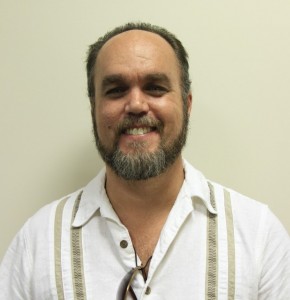 The myth of Thanksgiving is deeply embedded in American culture. I can remember cutting out paper turkeys and making pilgrim hats and Indian headdresse as a small childs. The teachers would tell us the story of the near starving pilgrims, saved by the Indians. Visions of Squanto, fish heads, maize and peaceful coexistence made for a nice story that I never had reason to doubt.
The myth of Thanksgiving is deeply embedded in American culture. I can remember cutting out paper turkeys and making pilgrim hats and Indian headdresse as a small childs. The teachers would tell us the story of the near starving pilgrims, saved by the Indians. Visions of Squanto, fish heads, maize and peaceful coexistence made for a nice story that I never had reason to doubt.
As an adult I have learned more about the history of Thanksgiving, including how the story we tell is mostly historically inaccurate. In fact, it was only in the 19th century that it began to take on the form we are most familiar with. Looking back at that most famous of Thanksgivings, in 1621, one fact is well attested to; some 90 Native Americans were in attendance over the three-day celebration. What isn’t usually mentioned is that shortly afterwards the Pilgrims were killing Native Americans, an arguably more entrenched tradition among settlers.
These intentional killings, whether through organized fighting or murder would remain an all too common theme of European interaction with Native Americans. Combined with epidemic diseases, which killed far more people, the assault on native cultures has been nothing short of a centuries-spanning genocide. Despite the horrors of the past, the worst result of all of this is that the systematic destruction of Native Americans and their culture is ongoing, even if less obviously violent.
“Native Americans and Juvenile Justice: A Hidden Tragedy,” is an article from the 2008 issue of Poverty and Race, and covers the intersection of this historically disadvantaged group with the modern justice system. From their overall poor conditions, native youth suffer higher rates of abuse and neglect and the highest suicide rate of any race. They fare particularly poorly with the law. “American Indian youth are grossly over-represented in state and federal juvenile justice systems and secure confinement. Incarcerated youth are much more likely to be subjected to the harshest treatment in the most restrictive environments and less likely to have received the help they need from other systems. They are 50 percent more likely than whites to receive the most punitive measures. Pepper spray, restraint and isolation appear to be grossly ... applied to Indian youth.”
Like African Americans, Native Americans continue to be harmed by the destruction of their cultures and economic potential. Just as the slaves were robbed of their labor and ability to earn, Native cultures were separated from their lands and denied access to resources that they rightfully own. Another similarity is the dominant culture’s adoption of myths that characterize the dispossessed as lazy, ignorant, unintelligent and generally less worthy of success.
One intriguing approach to addressing this problem appears in the 2012 edition of the Berkeley Journal of Criminal Law, “The Kids Aren’t Alright: An Argument to Use the Nation Building Model in the Development of Native Juvenile Justice Systems to Combat the Effects of Failed Assimilative Policies.” The author, Ryan Seelau, proposes the basic idea (which has historical validity) that Native tribes are actual nations, and when Native kids come into contact with state and federal justice systems they are interacting with a foreign culture and government. The results are often less effective than the norm seen in the dominant culture.
Using the Nation Building Model and data from Harvard’s Native American Program, Seelau examines the current state of affairs, how Native groups can improve interactions with youth, and then proposes that individual tribes “should seriously consider designing or re-designing their … systems to reflect their cultural values and expectations.”
This would not be an easy task. There isn’t one Native American culture or nation. There are more than 566 tribes recognized by the federal government, and they have significant differences. Each would have to look within and figure out what best works for them.
In the realm of juvenile justice reform we call this community based approaches. Restorative approaches (often based on indigenous responses to harmful actions) call for the same kind of local perspective in deciding what best serves the needs of a given community. It would be wonderful to see these processes come full circle, and applied to all of our communities. That would be something to be thankful for.